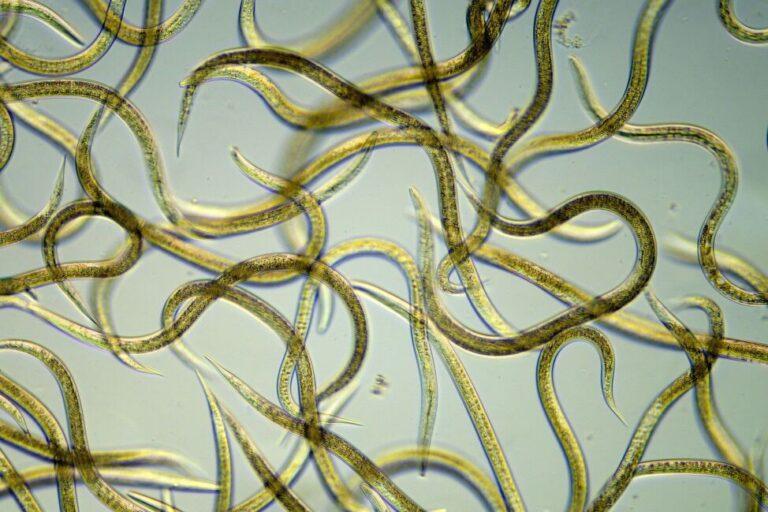What are nematodes? How do they affect our crops?
By AgriSC Scientific Team
Although most of our planet’s thousands of nematode worms are not a threat, some are parasites and can cause disease in humans and animals. In addition, some of these pests focus on plants, especially their root systems.
While most nematode species are beneficial, some parasitize plants, particularly their roots. They are about 1 millimeter long and can cause nodes, cysts, or tumors in the roots. They also injure the root tips, causing excessive branching. They create spots on the leaves or changes in color and cause areas on the leaves.
Tomatoes, potatoes, peppers, lettuce, corn, and carrots are affected at the roots. Conversely, symptoms on the leaves and upper parts are seen in chrysanthemums, onions, rye, and alfalfa.
What are these parasites, after all?
Even though they are frequently called “earthworms,” nematode worms are not closely related to them. They are multicellular organisms that undergo emergence, similar to insects. They possess an elongated, smooth, and non-fragmented (compartmentless) body. A microscope is necessary to observe the species concentrated in exceedingly diminutive plants. Adults possess long, slender bodies, although certain species manifest a pear-like bag shape.
These plant parasites, such as tapeworms, are not associated with parasitic worms that inhabit and infest the human body. This results in an immune system imbalance and the transmission of disease.
Can nematodes damage crops?
Some nematodes feed on the outer surface of plants, while others enter the plant tissue. Although soil nematodes are the best known, several species cause damage to plant roots, stems, foliage, or flowers.
Regardless of where they feed, these tiny worms can seriously damage the crop by using their pointed mouthparts to puncture cell walls. The real damage occurs when these parasitic worms inject saliva into plant cells with their mouths and then suck the liquid out. This can cause swelling of the affected tissues, altered growth, and dead areas. In addition, nematodes can carry viruses and bacterial diseases, which they transmit to plants. These wounds also provide an entry point for bacteria and fungi (secondary infections).
Some beneficial species improve soil fertility by breaking down dead organic matter, in addition to the nematode species that parasitize plants.

What do we notice in plants affected by nematodes?
Unlike most disease-causing organisms, plant parasitic nematodes rarely show characteristic symptoms. Usually, the observed symptoms are vague and may resemble those caused by other agents, such as viruses, nutrient deficiencies, or air pollution. Nematode parasites feeding above the soil can cause twisting and deterioration in plants’ leaves, stems, and flowers.
As for root-feeding nematode parasites, they can cause symptoms in the aerial part of the plant, such as discoloration, wilting, and reduced production. If injury from such parasites to the roots is suspected, it is helpful to carefully remove one of the affected plants and examine the roots for a more detailed inspection. If they have caused damage, you may notice small nodes, cysts, lesions on the roots, and injured roots with excessive branching.
Share the article
If you are in an agronomy business, own an agronomy shop, and seeking a collaboration opportunity with AgriSC, fill out the form below. Our team will respond promptly!
